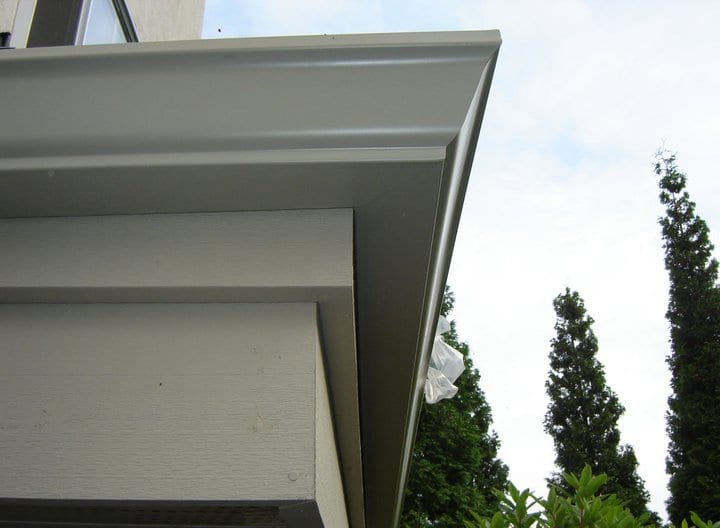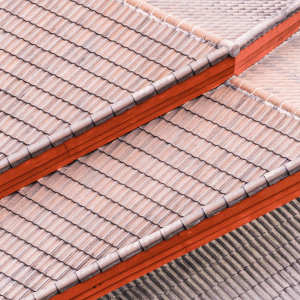
Eavestrough (Gutter) Corners: Miter or Seam
What is Eavestrough Corners?
Eavestrough corners, often referred to as gutter corners, are the critical sections of a gutter system where two gutter lines meet. These corners are essential for directing rainwater efficiently and preventing leaks that can damage the roof, walls, and foundation of a building.
The Role of Eavestrough Corners in Gutter Systems
The role of eavestrough corners in gutter systems is crucial. They serve as junction points, ensuring that water is directed around corners and down to the downspouts without spilling over the edges. Properly installed corners maintain the integrity of the gutter system, aiding in the effective management of rainwater and preventing potential gutter corner repair needs due to leaks or structural failures.
Types of Eavestrough Corners
There are primarily two types of eavestrough corners used in gutter systems: miters and seams. Each type has its unique features and applications, offering different benefits and challenges based on the specific requirements of the gutter system.
Miters: Definition and Varieties
Miters are the more commonly used type of gutter corners, featuring precision-cut joints that fit together at angles, typically 45 degrees. There are several varieties of miters:
- Box Miters: These are pre-fabricated corner pieces that simplify installation by fitting over the existing gutter sections. They are easy to install but might not offer the same level of customization as other types.
- Strip Miters: These consist of strips of gutter material that are folded and fastened to form a corner. They offer a more seamless look but require more skill and precision to install properly.
- Custom Miters: These are bespoke miters created to fit specific angles and dimensions, often used in complex or non-standard gutter systems. They provide the best fit and appearance but can be more expensive and labor-intensive.
Seams: Definition and Varieties
Seams are another type of gutter corner where two gutter sections are joined together using a seam. This method is less common but still widely used, particularly in custom or older gutter systems. The varieties of seams include:
- Butt Seams: This method involves butting two gutter sections together and sealing the joint with a high-quality sealant. It is a straightforward approach but requires regular maintenance to ensure the seal remains intact.
- Lap Seams: In this technique, one gutter section overlaps the other, and the joint is sealed and riveted for added stability. Lap seams are more durable than butt seams but can be more visible and less aesthetically pleasing.
- Soldered Seams: This method uses soldering to join the gutter sections, creating a strong and watertight seal. It is the most durable but also the most labor-intensive and requires specialized skills.
Choosing Between Miters and Seams
When deciding between miters and seams for gutter corners, several factors should be considered, including the gutter system’s design, the desired aesthetic, and the long-term maintenance requirements.
Pros and Cons of Miters
Pros:
- Aesthetics: Miters offer a cleaner and more seamless look, enhancing the overall appearance of the gutter system.
- Ease of Installation: Pre-fabricated miters like box miters simplify the installation process, making them ideal for DIY projects.
- Customization: Custom miters provide a perfect fit for non-standard angles, ensuring better performance.
Cons:
- Cost: Custom and precision-cut miters can be more expensive than other options.
- Skill Requirement: Installing miters, especially custom ones, requires a certain level of skill and precision.
Pros and Cons of Seams
Pros:
- Durability: Soldered seams are exceptionally durable and provide a long-lasting solution.
- Flexibility: Seams can be adjusted on-site to fit various gutter configurations, offering greater flexibility.
- Cost-Effective: Butt and lap seams are often less expensive than custom miters.
Cons:
- Maintenance: Seams, especially butt seams, require regular maintenance to prevent leaks.
- Aesthetics: Lap seams can be more visible and less aesthetically pleasing compared to miters.
In conclusion, the choice between miters and seams for eavestrough corners depends on various factors, including aesthetic preferences, installation complexity, and long-term maintenance considerations. Properly installed gutter corners, whether using miters or seams, play a vital role in ensuring an efficient and reliable gutter system, preventing water damage and reducing the need for frequent gutter corner repair.
The Advantages of Professional Services: Why You Should Turn to Experts

All our eavestrough corners ( other words – gutter seams or miters) are aligned at proper angle ( 90, 45 or custom degree angle). Eavestrough corner parts are right overlapped and manually adjusted by our professional installers for best look appearance and quality operation.
We use only exact color match touch-up spray paints to prevent any possible scratches after corner alignment.
All of our eavestrough corners are properly secured and sealed with right amount of professional, weather resistant, durable thermoplastic sealant to prevent leaks but do not affect water flow.
We do not use pre-made eavestrough corners unless requested by customer.
All of our eavestrough corners are covered by
Maxima Aluminum LTD workmanship warranty. Please feel free to call us at 416-677-8191 for any eavestroughing needs. We provide our customers with quality eavestrough services all across west Greater Toronto Area, Mississauga, Oakville, Milton and Brampton.


